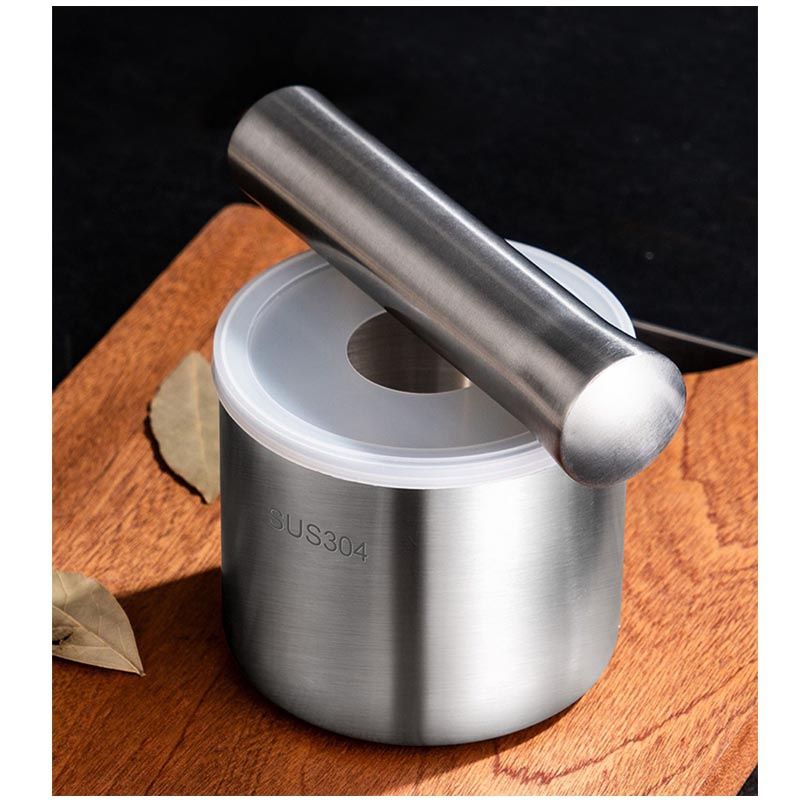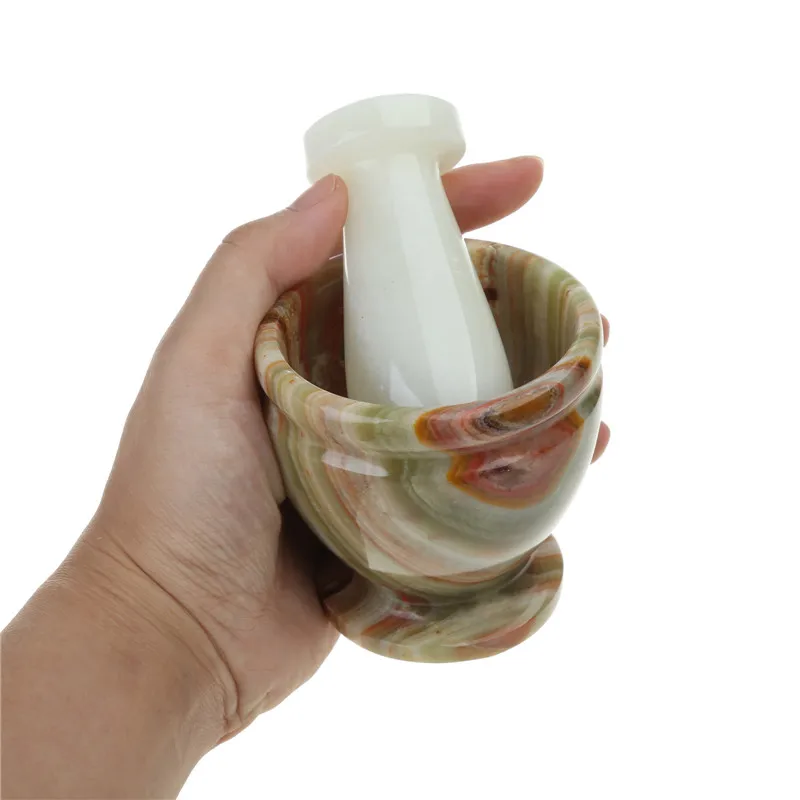
As the holiday season approaches, kitchens everywhere come alive with the sounds and smells of festive cooking and baking. While modern appliances often dominate the countertop, there’s one traditional tool that deserves a spot in your holiday kitchen: the mortar and pestle. This age-old kitchen essential offers unparalleled versatility and enhances the flavor of your dishes in ways that no electric gadget can match. Whether you’re preparing a holiday feast, crafting homemade gifts, or exploring new seasonal recipes, these can elevate your holiday cooking to new heights. This article explores the many uses of these item during the holiday season, tips for choosing the right one, and ideas for incorporating it into your festive culinary traditions.
Why the Mortar and Pestle is a Must-Have for the Holidays
These may seem like a simple tool, but it offers a wide range of benefits, especially during the busy holiday season. Here’s why it’s an essential addition to your holiday kitchen:
1. Enhanced Flavor and Aroma
Grinding spices, herbs, and other ingredients by hand with a mortar and pestle releases essential oils and flavors that are often lost when using electric grinders. This results in more vibrant and aromatic dishes, perfect for impressing guests during holiday meals.
2. Versatility in the Kitchen
These can be used for a variety of tasks, from grinding spices and herbs to making pastes, sauces, and even cocktails. Its versatility makes it an indispensable tool for holiday cooking, whether you’re preparing traditional dishes or experimenting with new recipes.
3. Connection to Tradition
Using a mortar and pestle connects you to centuries of culinary tradition. This hands-on approach to food preparation adds a sense of authenticity and craftsmanship to your holiday cooking, enhancing the overall experience.
4. Control Over Texture
Unlike electric grinders, these allows you to control the texture of your ingredients. Whether you need a fine powder or a coarse grind, you can achieve the perfect consistency for your holiday recipes.
Choosing the Right Mortar and Pestle for the Holidays
Selecting the right mortar and pestle is key to making the most of this tool during the holiday season. Here’s a guide to help you choose the best one for your kitchen:
1. Material Matters
- Granite: Granite are heavy and durable, making them ideal for grinding hard spices and seeds. They are perfect for creating smooth pastes and sauces.
- Marble: Marble is a beautiful and durable option, offering a smooth surface that’s easy to clean. It’s great for grinding softer ingredients and making pestos.
- Ceramic: Ceramic mortar and pestles are lightweight and best suited for grinding softer ingredients like herbs and garlic. They often come in decorative designs, adding a festive touch to your kitchen.
- Wood: Wooden are lightweight and perfect for grinding delicate herbs and spices. They have a rustic appeal that’s fitting for traditional holiday kitchens.
2. Size and Capacity
Consider the size of the mortar and pestle based on your cooking needs. Larger mortars are ideal for making batches of spice blends or sauces, while smaller ones are great for grinding individual spices or herbs.
3. Ease of Use
Look for with a comfortable grip and a well-balanced design. The pestle should fit comfortably in your hand, allowing you to apply the right amount of pressure without straining.
4. Aesthetic Appeal
Since the holidays are a time for entertaining, consider choosing a mortar and pestle that complements your kitchen décor. Marble or ceramic options often come in festive colors and designs, adding a touch of holiday cheer to your cooking space.
Holiday Uses for the Mortar and Pestle
The versatility of these makes it a valuable tool for a wide range of holiday cooking tasks. Here are some ways to incorporate it into your festive culinary traditions:
1. Creating Custom Spice Blends
The holiday season is the perfect time to experiment with new flavors and spice blends. Use your mortar and pestle to grind whole spices like cinnamon, cloves, nutmeg, and star anise. Combine them with other ingredients to create custom spice blends for holiday cookies, mulled wine, or roasted meats.
2. Making Fresh Pesto and Sauces
Fresh pesto and sauces add a vibrant and flavorful touch to holiday dishes. Use these to crush basil, garlic, nuts, and Parmesan for a traditional pesto, or create other sauces like chimichurri or romesco to accompany your holiday meals.
3. Crafting Festive Cocktails
Impress your guests with handcrafted holiday cocktails using a mortar and pestle. Muddle fresh herbs, citrus, and spices to create unique and aromatic cocktails that capture the essence of the season. Try muddling cranberries and rosemary for a festive twist on a classic cocktail.
4. Preparing Homemade Gifts
Homemade spice blends, herb-infused salts, and fresh pestos make thoughtful and personalized holiday gifts. Use these to prepare these items, and package them in decorative jars with festive labels.
5. Enhancing Holiday Baking
Incorporate freshly ground spices into your holiday baking for a more intense flavor. Use your mortar and pestle to grind cinnamon sticks, nutmeg, and cardamom for cookies, cakes, and pies. The freshly ground spices will elevate your baked goods, making them stand out on the holiday dessert table.
Tips for Using and Caring for Your Mortar and Pestle During the Holidays
To get the most out of your stuff during the holiday season, follow these tips for use and care:
1. Season Your Mortar
Before using a new mortar and pestle, season it by grinding a small amount of white rice. This helps remove any stone or ceramic dust and prepares the surface for grinding spices and herbs.
2. Grind in Small Batches
For the best results, grind your ingredients in small batches. This ensures even grinding and allows you to control the texture more effectively.
3. Clean Properly
Clean it immediately after use to prevent flavors from transferring between different ingredients. Use warm water and a stiff brush to clean it thoroughly. Avoid using soap on porous materials like granite or wood, as it can be absorbed and affect the flavor of future ingredients.
4. Store with Care
Store it in a dry, cool place when not in use. If you have a wooden mortar and pestle, apply a light coat of food-grade oil occasionally to keep the wood in good condition.
Incorporating the Mortar and Pestle into Your Holiday Traditions
Here’s how to make these a central part of your holiday kitchen:
1. Holiday Cooking Rituals
Make the use of a mortar and pestle part of your holiday cooking rituals. Gather family members around to help grind spices, create sauces, or muddle ingredients for festive cocktails. It’s a fun and interactive way to involve everyone in the holiday preparations.
2. Showcase During Entertaining
When hosting holiday gatherings, use it as part of a live cooking or cocktail-making demonstration. Guests will enjoy seeing the traditional tool in action and may even be inspired to try it themselves.
3. Gift with a Personal Touch
If you’re giving homemade spice blends, pestos, or herb-infused salts as gifts, consider pairing them with a small mortar and pestle set. It’s a thoughtful and practical gift that the recipient can use for future holiday seasons.
Conclusion: Elevate Your Holiday Cooking with the Timeless Mortar and Pestle
This is a timeless kitchen tool that brings a unique blend of functionality and tradition to your holiday cooking. By choosing the right one and incorporating it into your festive preparations, you can enhance the flavor and aroma of your dishes, connect with culinary traditions, and add a personal touch to your holiday meals and gifts.
This holiday season, embrace the versatility and charm of the mortar and pestle, and discover how this simple tool can transform your cooking into something truly special.



